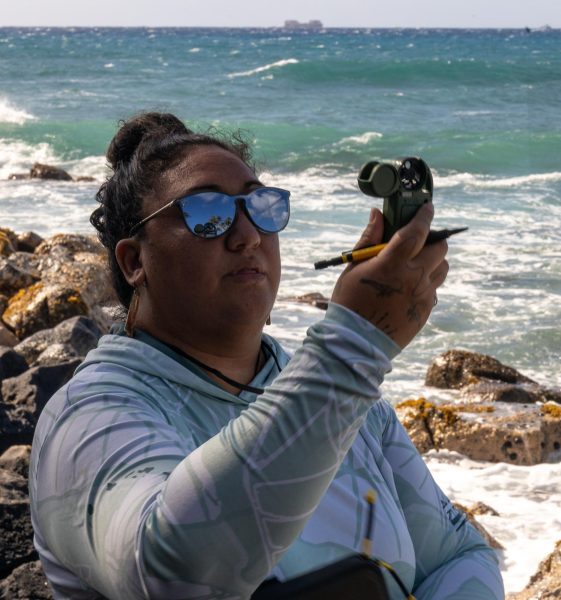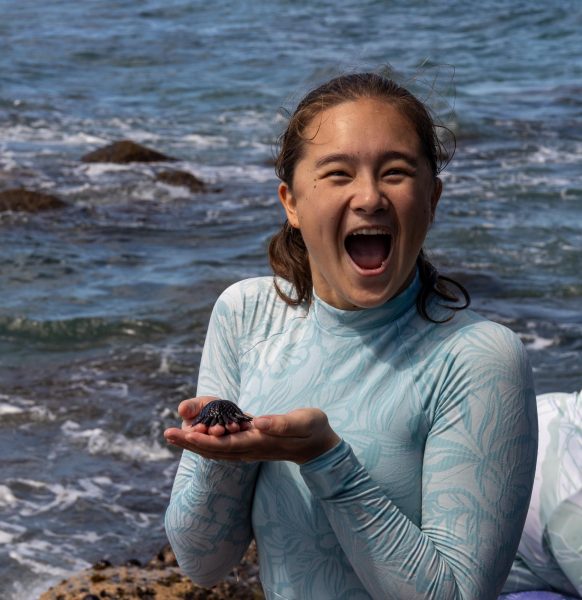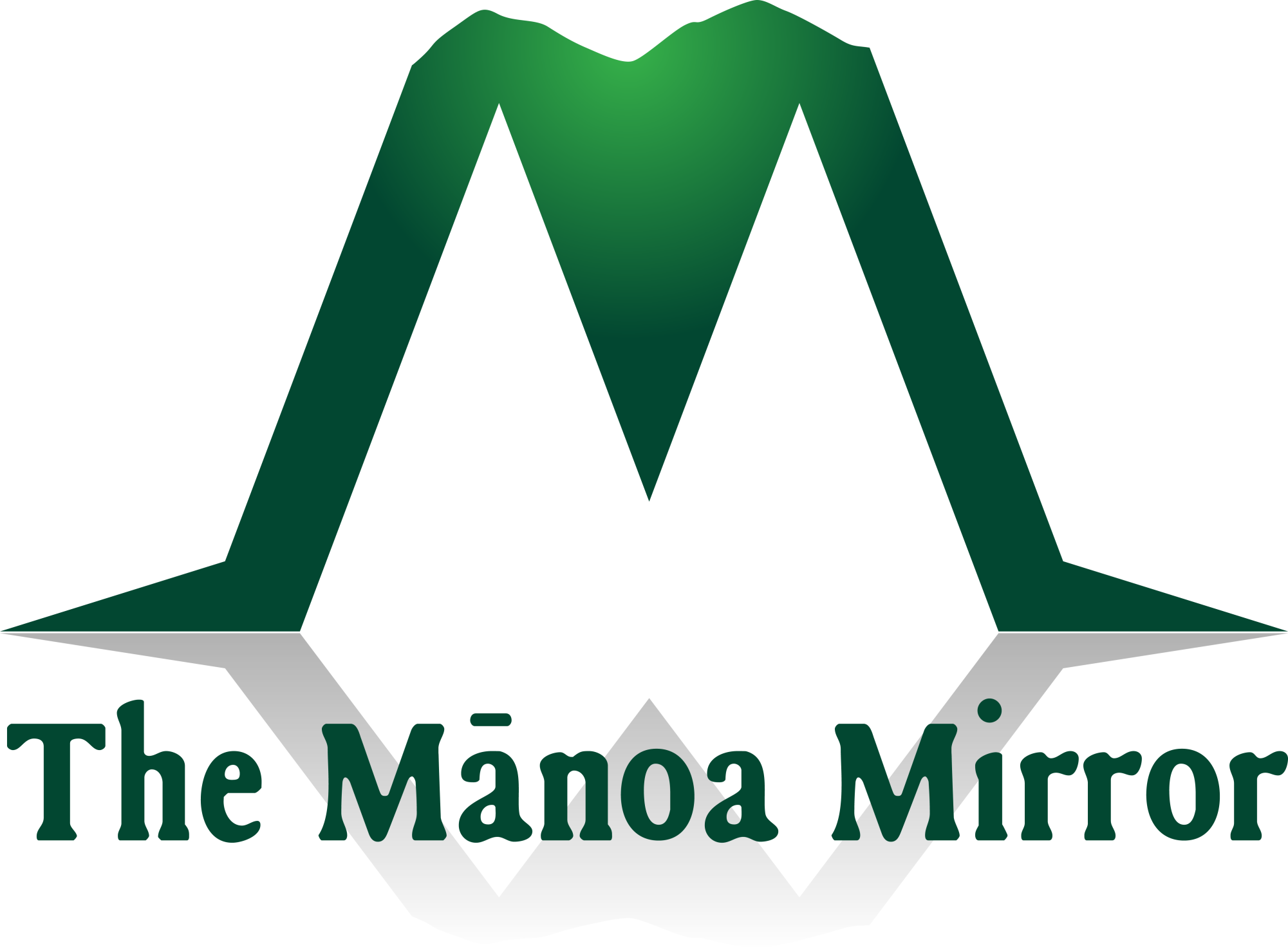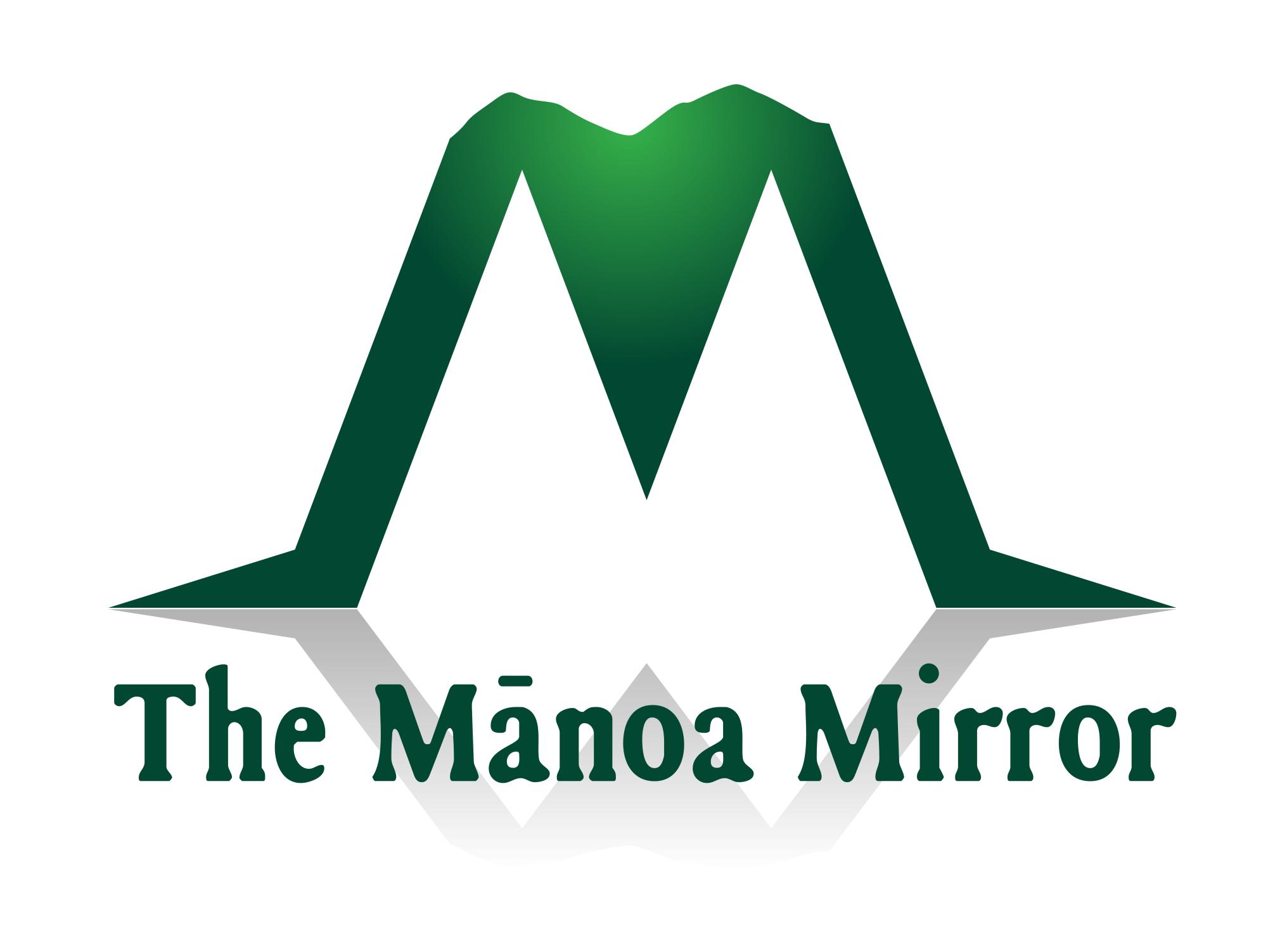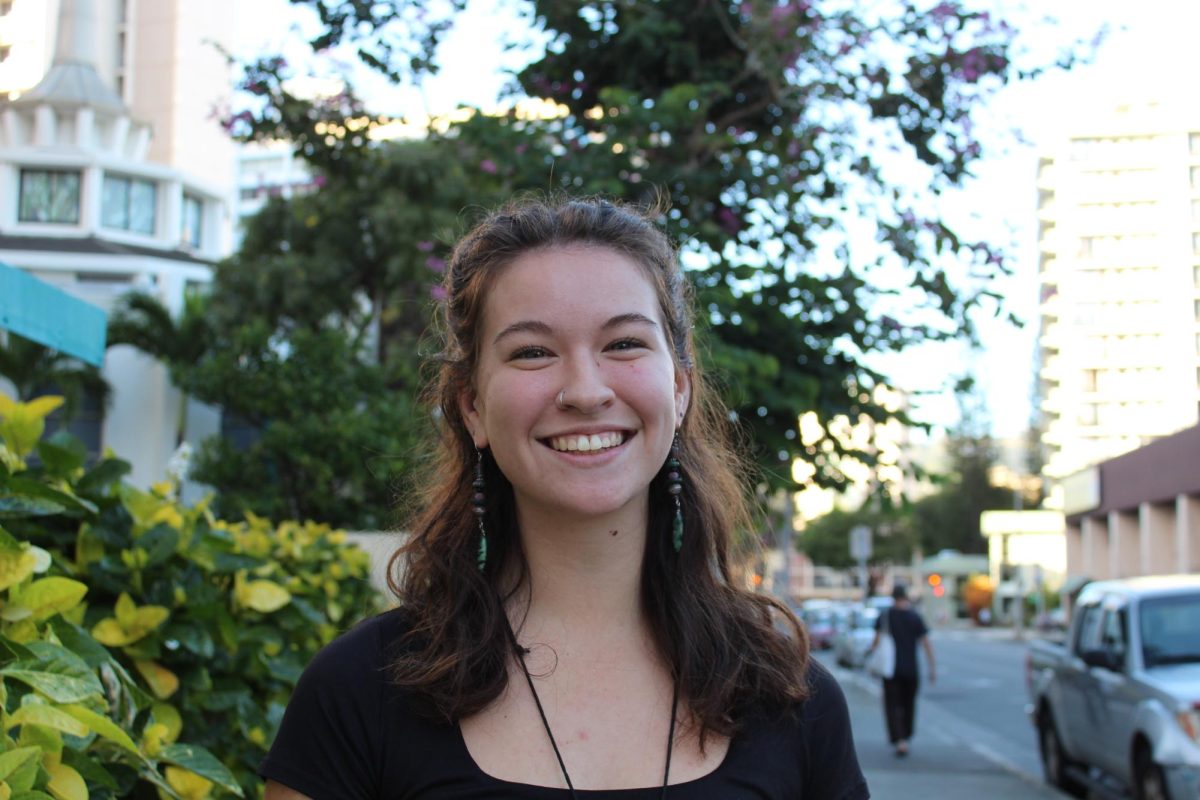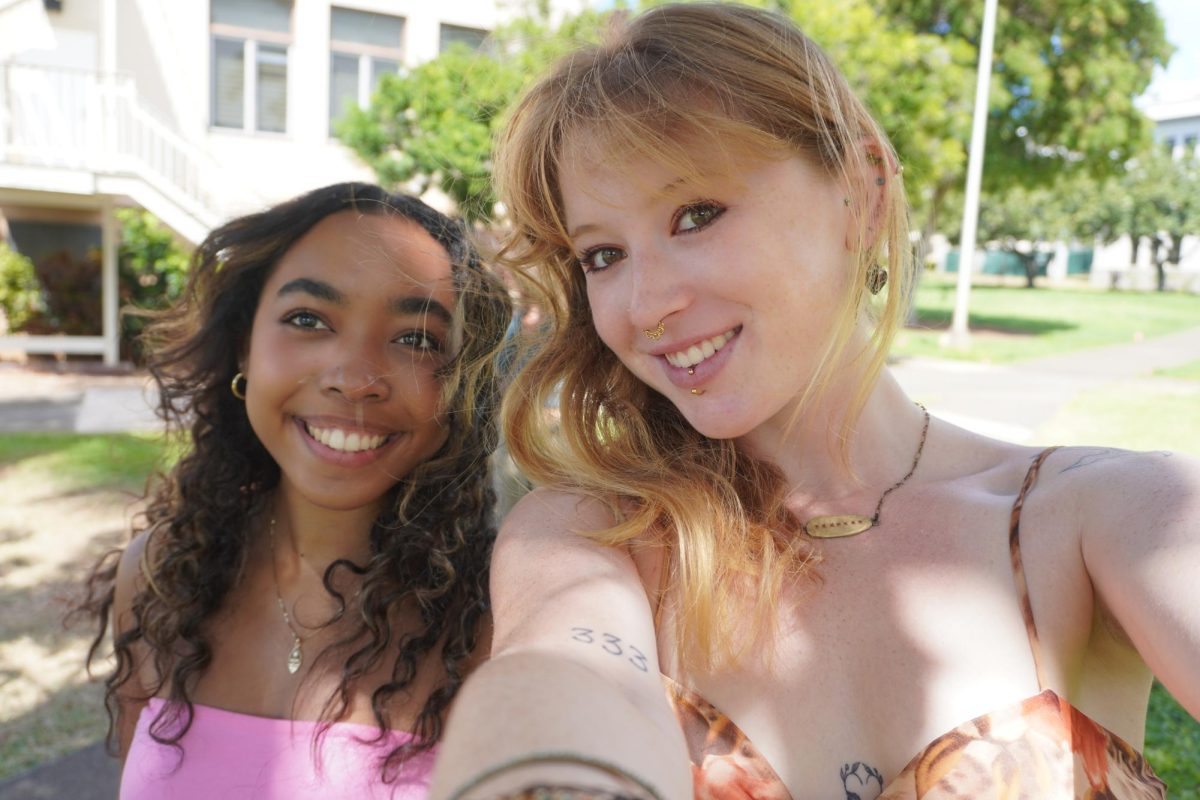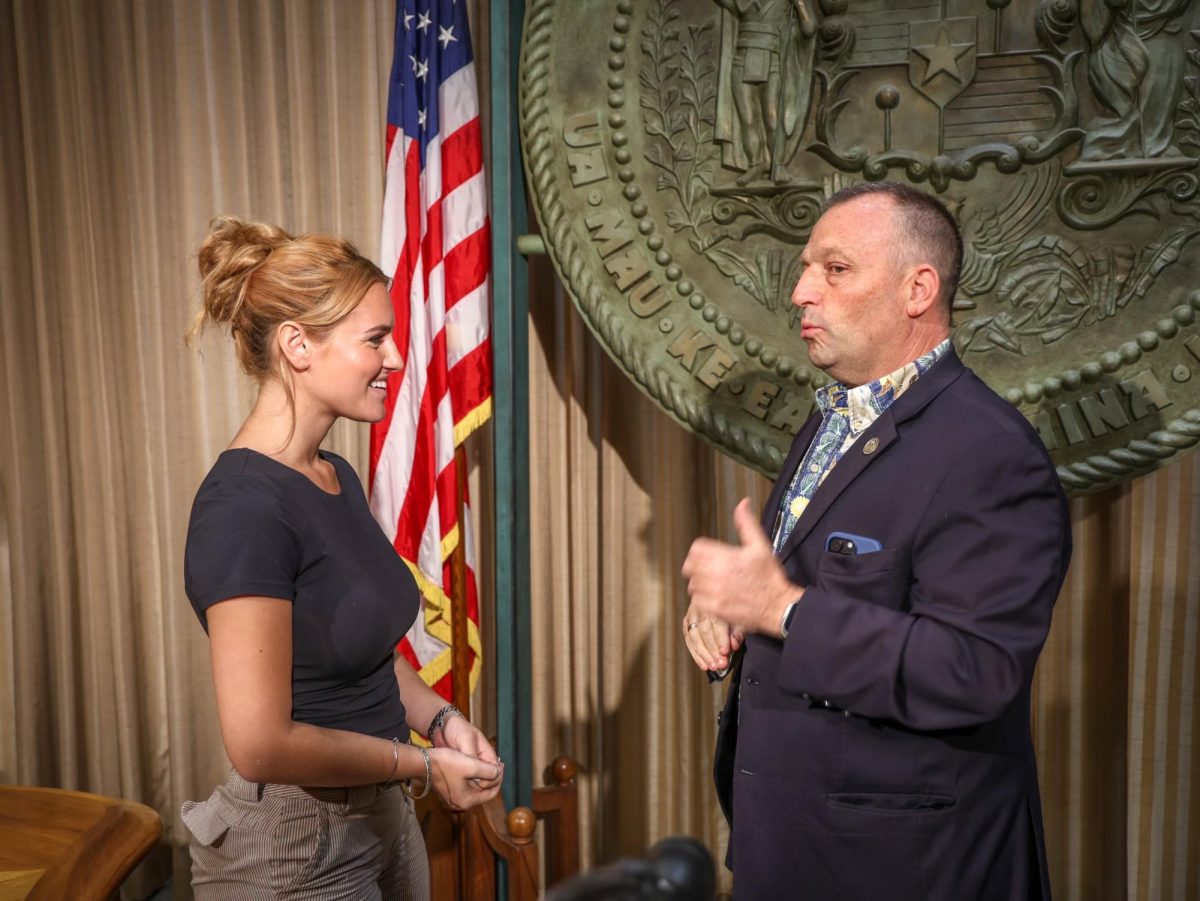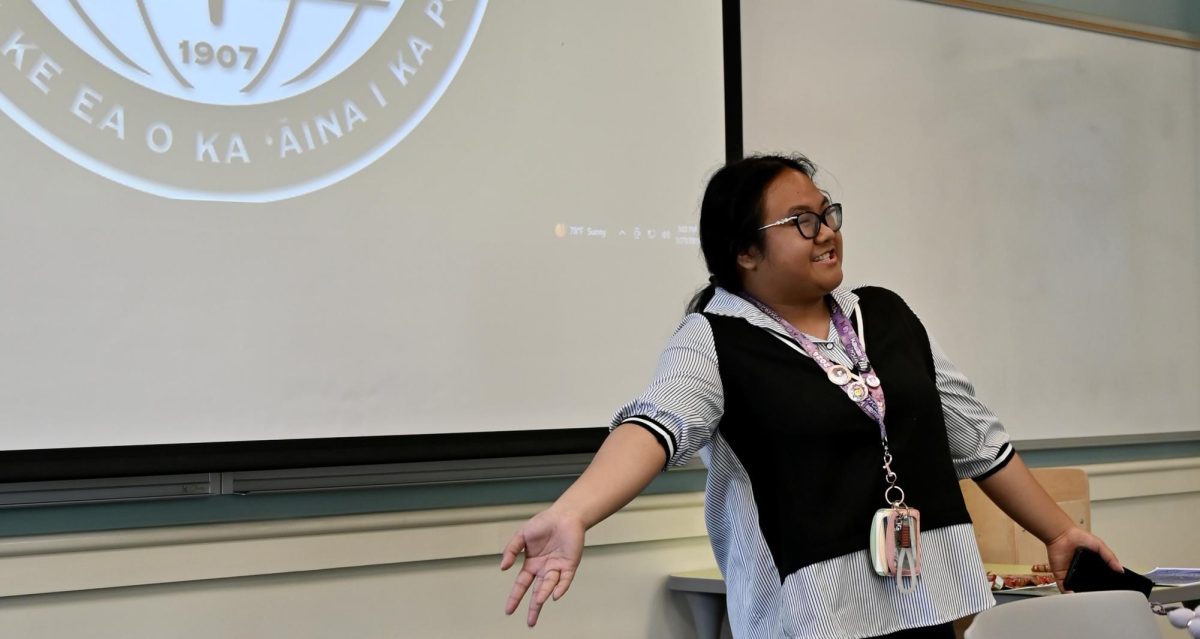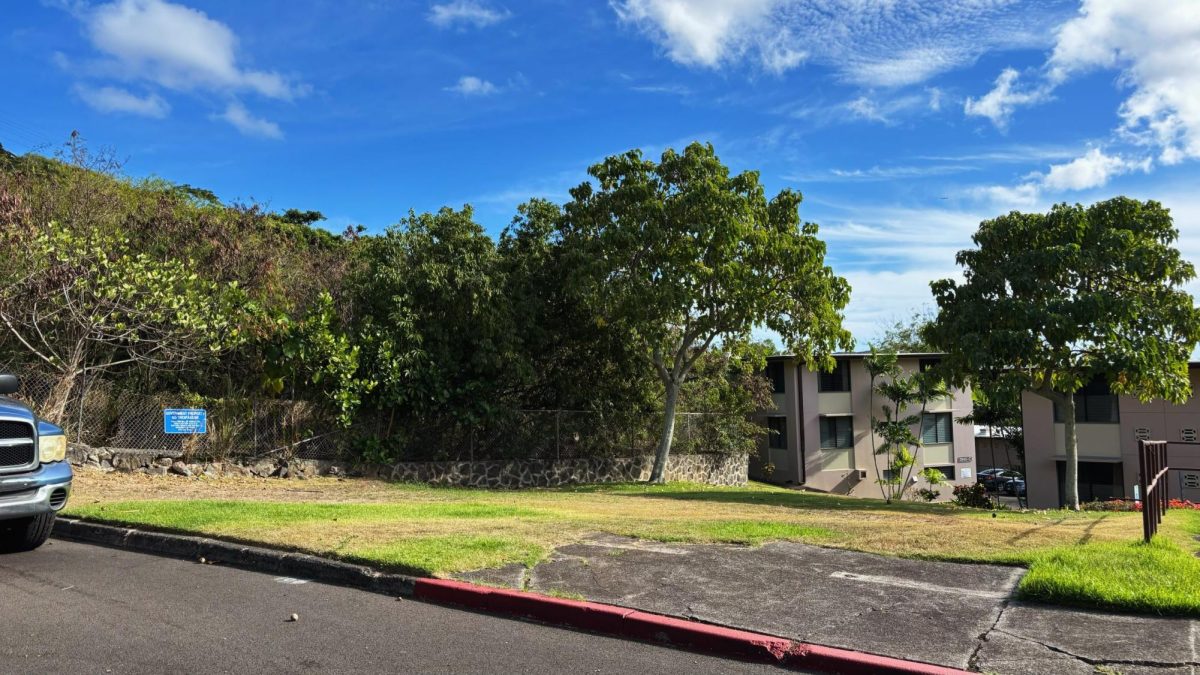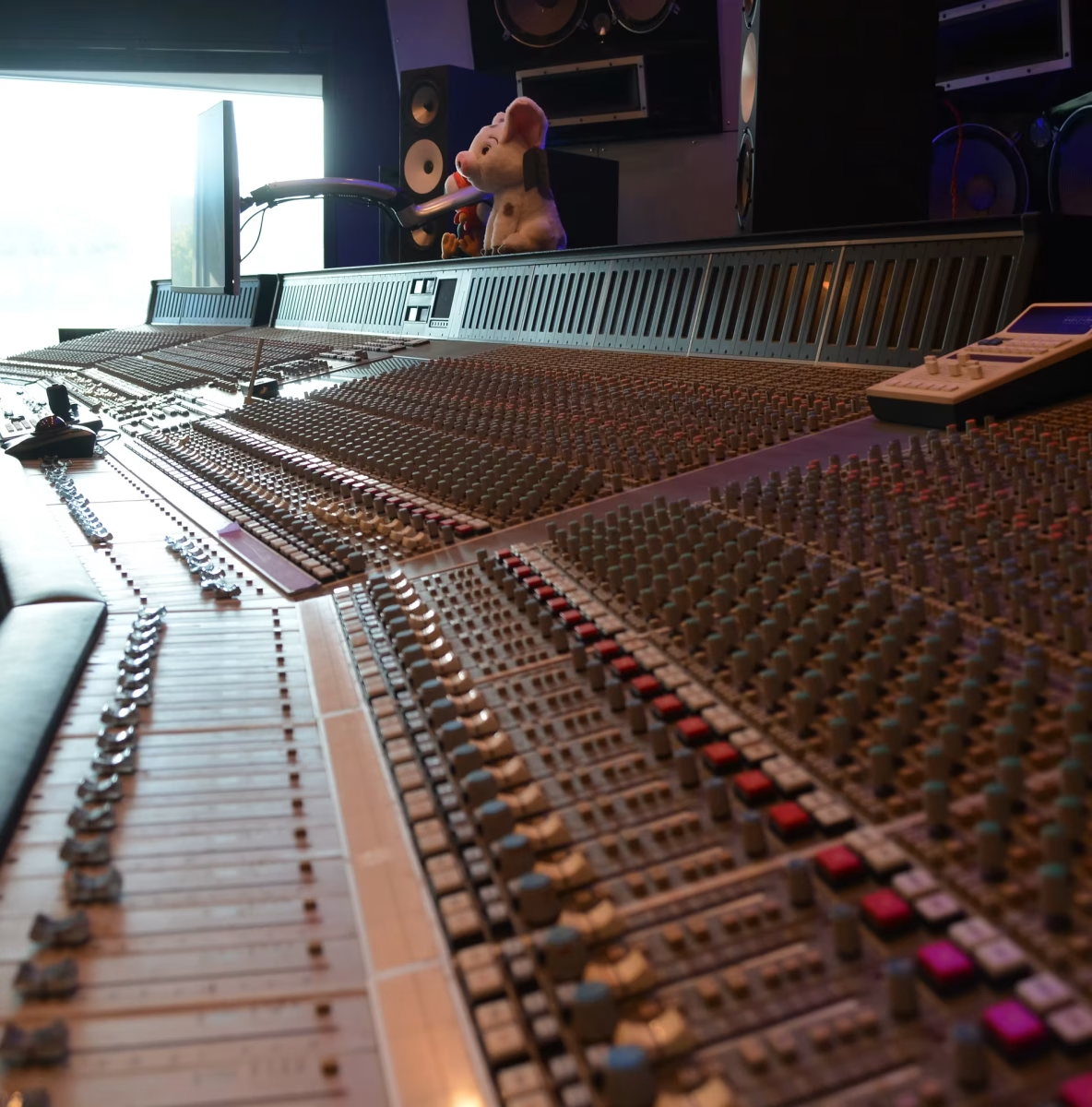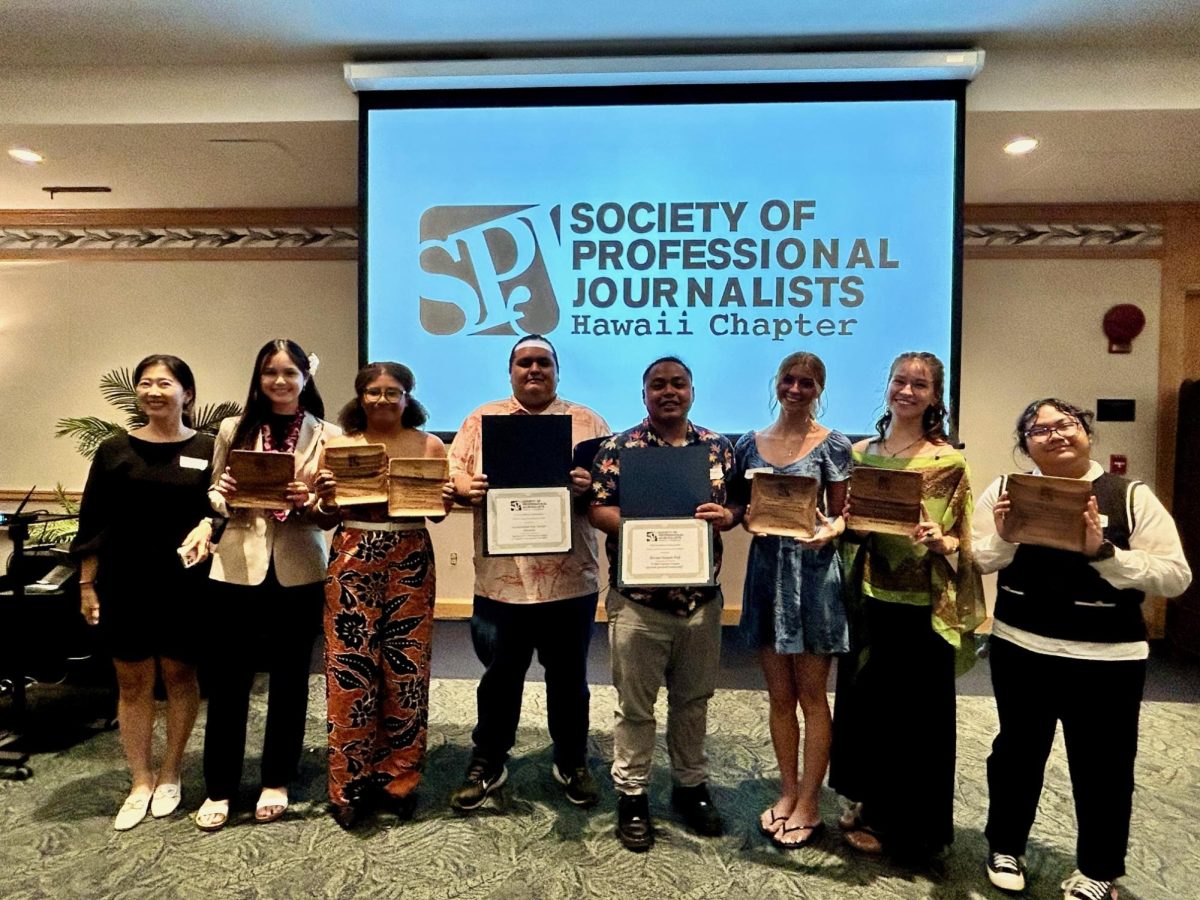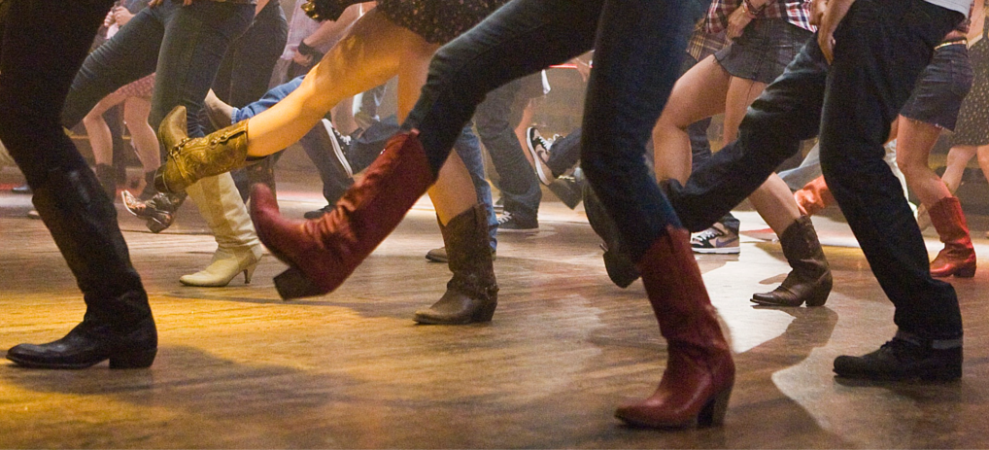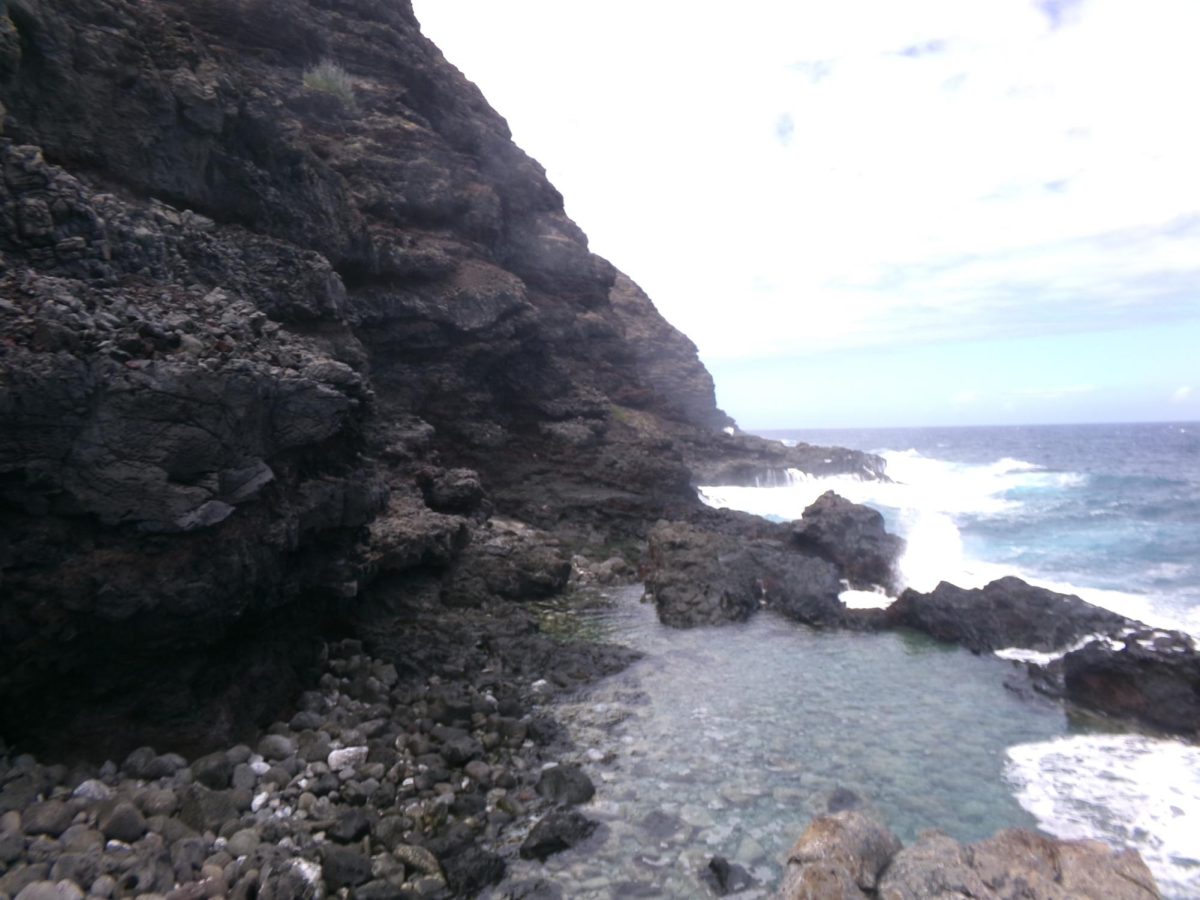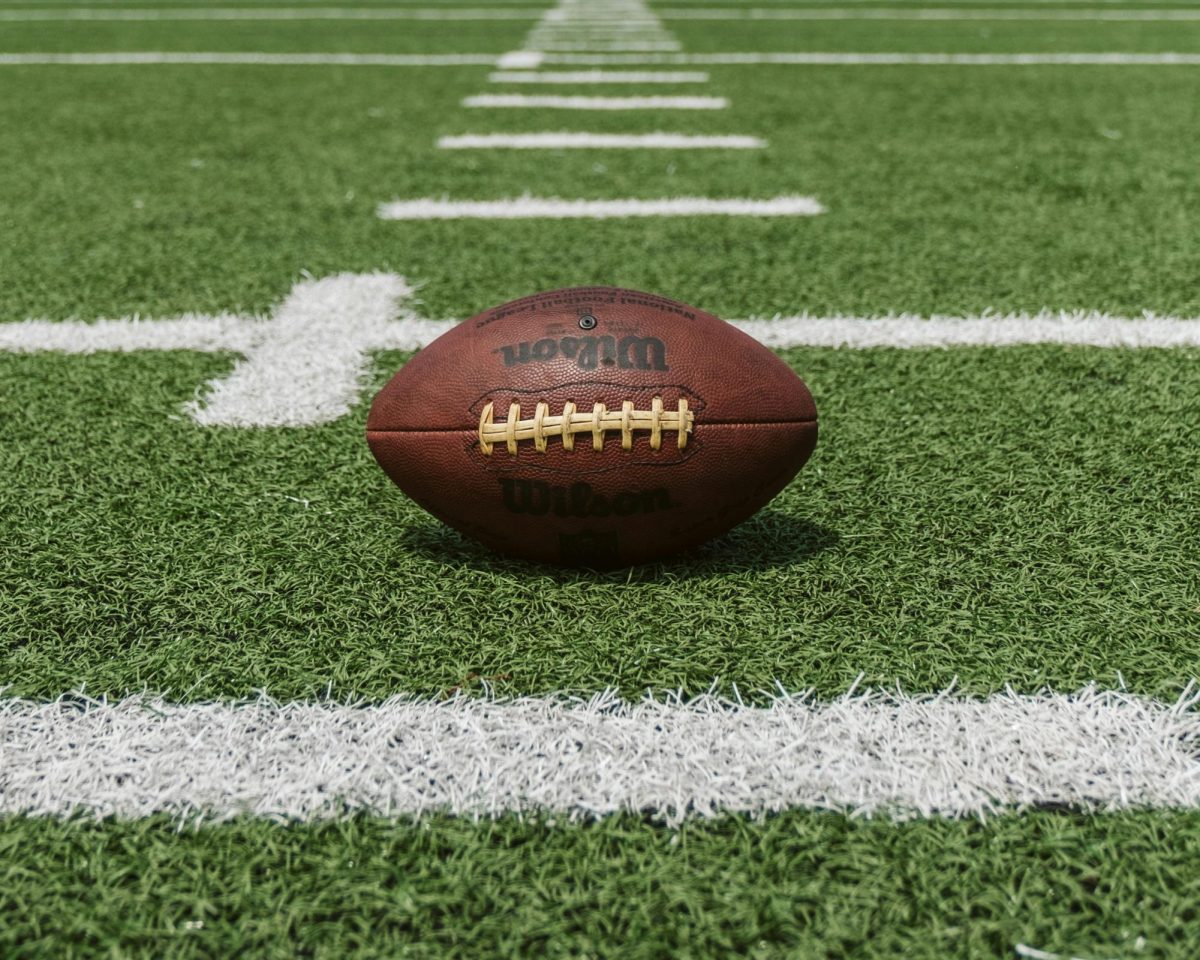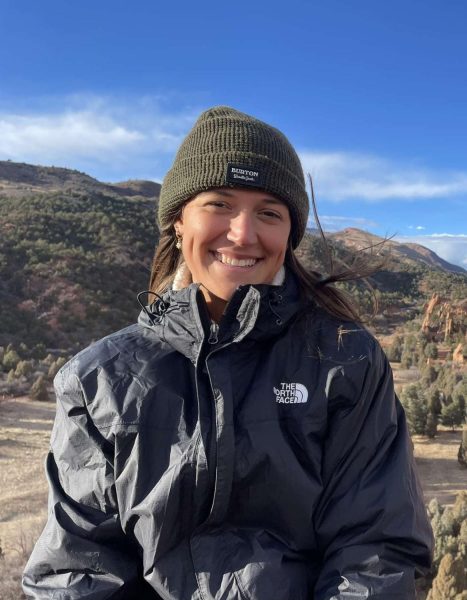Kekuʻiapōiula Keliipuleole walks down the slippery, jagged rocks towards the rocky shore to start her fieldwork for the day. She moves about the unforgiving shore effortlessly, as if the land and sea are just an extension of herself. It is easy to tell that she is kamaʻāina to this area.
Keliipuleole is a grad student and a part of the ME*E lab at UH Mānoa. The lab is made up entirely of kamaʻāina and Native Hawaiians. The lab conducts science differently, with a strong focus on respecting the land and communities.
Keliipuleole says that Western scientists tend to use methods that are not in alignment with Native Hawaiian values. She says this can often lead to practices that are not pono (proper) which causes more harm than good to the land and its people.
“Even if they’re in conservation, they’re not really conserving things because they are doing it the wrong way,” says Keliipuleole. “They’re not talking to the locals.”
Keliipuleole is currently working on a project with undergraduate student Amy Deatherage to study hā’uke’uke—helmet urchins—at Kaʻalawai.
The project was prompted by a concerning decline in ʻopihi that Keliipuleole and that fellow researchers noticed. Keliipuleole says that when she was a child, she grew up eating both hā’uke’uke and ʻopihi. However, recently, people have switched to just consuming ʻopihi, contributing to the substantial decline in their populations.
“Humans have thrown out the natural cycle and balance by only focusing on eating one organism,” says Keliipuleole.
Because she is local to this area, she knows how the patterns of the eating habits of locals have changed over time.
“These are the waters I grew up with, the urchins I grew up eating, so I am very connected to this,” says Keliipuleole.
She and Deatherage are studying hā’uke’uke populations in order to hopefully find that they are stable enough for locals to start eating them again. The plan is to promote switching from ʻopihi to hā’uke’uke to rebalance coastal resources. This will put less stress on ʻopihi populations while allowing locals to still enjoy traditional foods.
Keliipuleole says ʻopihi and hā’uke’uke are very under-studied, largely due to the dangerous intertidal zones where they reside in.
As Keliipuleole did her fieldwork, she was constantly splashed by large waves that could knock her into jagged rocks or pull her out into the open water if she was not careful. These organisms are being neglected by Western researchers because people who do not know these waters are not comfortable working in this environment.
Keliipuleole feels that it is her responsibility as someone who is kamaʻāina to the land and sea in this area to conduct his research.
Deatherage is from California. She says that without Keliipuleole, being able to do research in this area would be impossible.
“She has been coming here her whole life,” says Deatherage. “She knows how the waves work here. She knows what to look out for, what I should and should not be scared of.”
Both Keliipuleole and Deatherage say that it is important for students and researchers who come to Hawai’i to learn about the land and culture before going out and conducting studies. Especially as an out-of-state student, Deatherage says she is extremely grateful for the opportunity to be a part of this community-led science.
“A lot of the things we learn are very focused on Western science as opposed to traditional or indigenous knowledge,” says Deatherage. “I think it is really important that more students learn about Hawaiian culture.”
